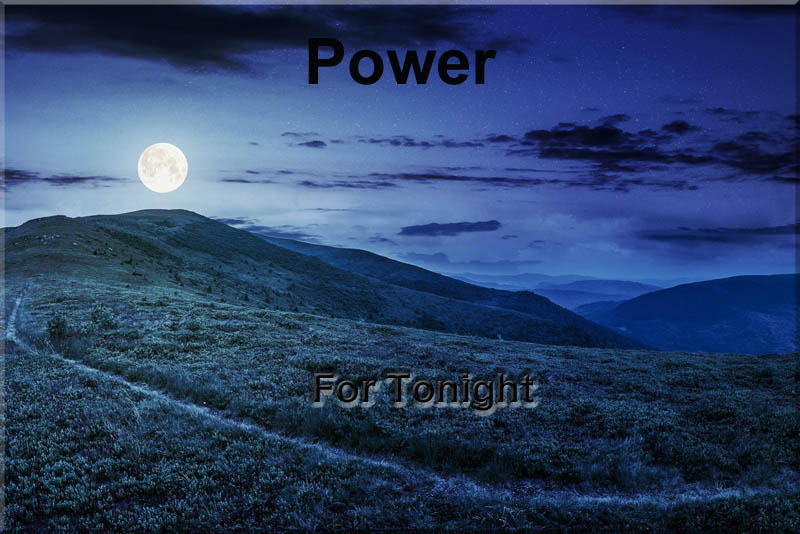Bethlehem and a Manger

Caesar Augustus, the Roman ruler from 27BC to AD14, called for a census. Everyone was to return to his ancestral home to be counted and to pay taxes.
As a descendant of David, Joseph traveled to Bethlehem, David's birthplace.
Bethlehem means "House of Bread", a fitting name for this town, set amid wheat fields. It is six miles south of Jerusalem, centered on a limestone ridge over 2500 feet high.
It may not have been required that Mary accompany Joseph but they knew her time of childbirth was near and would have wanted to be together. (Luke 2:1-5)
According to Luke 2:7, Mary gave birth to her son, wrapped Him in cloths and placed Him in a manger because there was no room in the inn.
Manger: a box or trough used to feed horses or cattle.
Most of us picture Mary and Joseph, as shown in Christmas displays, in a wooden stable, possibly attached to a house or an inn. More likely, it was a dark, cave-like atmosphere into which she gave birth. The houses of Bethlehem are built on the slope of the limestone ridge. Many have stables hollowed out of the rock under the house. It may have been in one of these structures that the Savior was born.
Mary wrapped Him in strips of cloth or swaddling. It was common to wrap infants, round and round, in long strips of cloth as a way of keeping them warm and secure.
In the fields near Bethlehem, there were shepherds guarding their flocks. These sheep were probably destined for sacrifice since they were so close to Bethlehem. The common flocks were to be kept in the wilderness.
An angel appeared to the shepherds, telling them that the Savior was born and they would find Him wrapped in cloths and lying in a manger.
Why were the shepherds - common working men - given this amazing birth announcement? Perhaps it was because the baby would be the Good Shepherd John 10:11 or because Jesus would always love the simple people. Or was it symbolic of His role as the ultimate sacrificial lamb, paying the price of sin, once and for all?
Rejoice as you picture the Baby in the manger, but remember that He grew up, lived a sinless life, died on a cross, was resurrected three days later and is at the right hand of God. He is called Wonderful Counselor, Mighty God, and Prince of Peace. (Isaiah 9:6) He is called Immanuel (Matthew 1:23) , Son of the Most High (Luke 1:32) and Prince and Savior (Acts 5:31).
You can meet this Jesus in the pages of the Bible and in prayer.
For your recreational reading:

As a descendant of David, Joseph traveled to Bethlehem, David's birthplace.
Bethlehem means "House of Bread", a fitting name for this town, set amid wheat fields. It is six miles south of Jerusalem, centered on a limestone ridge over 2500 feet high.
It may not have been required that Mary accompany Joseph but they knew her time of childbirth was near and would have wanted to be together. (Luke 2:1-5)
According to Luke 2:7, Mary gave birth to her son, wrapped Him in cloths and placed Him in a manger because there was no room in the inn.
Most of us picture Mary and Joseph, as shown in Christmas displays, in a wooden stable, possibly attached to a house or an inn. More likely, it was a dark, cave-like atmosphere into which she gave birth. The houses of Bethlehem are built on the slope of the limestone ridge. Many have stables hollowed out of the rock under the house. It may have been in one of these structures that the Savior was born.
Mary wrapped Him in strips of cloth or swaddling. It was common to wrap infants, round and round, in long strips of cloth as a way of keeping them warm and secure.
In the fields near Bethlehem, there were shepherds guarding their flocks. These sheep were probably destined for sacrifice since they were so close to Bethlehem. The common flocks were to be kept in the wilderness.
An angel appeared to the shepherds, telling them that the Savior was born and they would find Him wrapped in cloths and lying in a manger.
Why were the shepherds - common working men - given this amazing birth announcement? Perhaps it was because the baby would be the Good Shepherd John 10:11 or because Jesus would always love the simple people. Or was it symbolic of His role as the ultimate sacrificial lamb, paying the price of sin, once and for all?
Rejoice as you picture the Baby in the manger, but remember that He grew up, lived a sinless life, died on a cross, was resurrected three days later and is at the right hand of God. He is called Wonderful Counselor, Mighty God, and Prince of Peace. (Isaiah 9:6) He is called Immanuel (Matthew 1:23) , Son of the Most High (Luke 1:32) and Prince and Savior (Acts 5:31).
You can meet this Jesus in the pages of the Bible and in prayer.
For your recreational reading:

You Should Also Read:
3 Wise Men
Mary of Nazareth, Mother of Jesus
JOSEPH - Husband of Mary

Related Articles
Editor's Picks Articles
Top Ten Articles
Previous Features
Site Map
Follow @LynneChapman
Tweet
Content copyright © 2023 by Lynne Chapman. All rights reserved.
This content was written by Lynne Chapman. If you wish to use this content in any manner, you need written permission. Contact Lynne Chapman for details.









